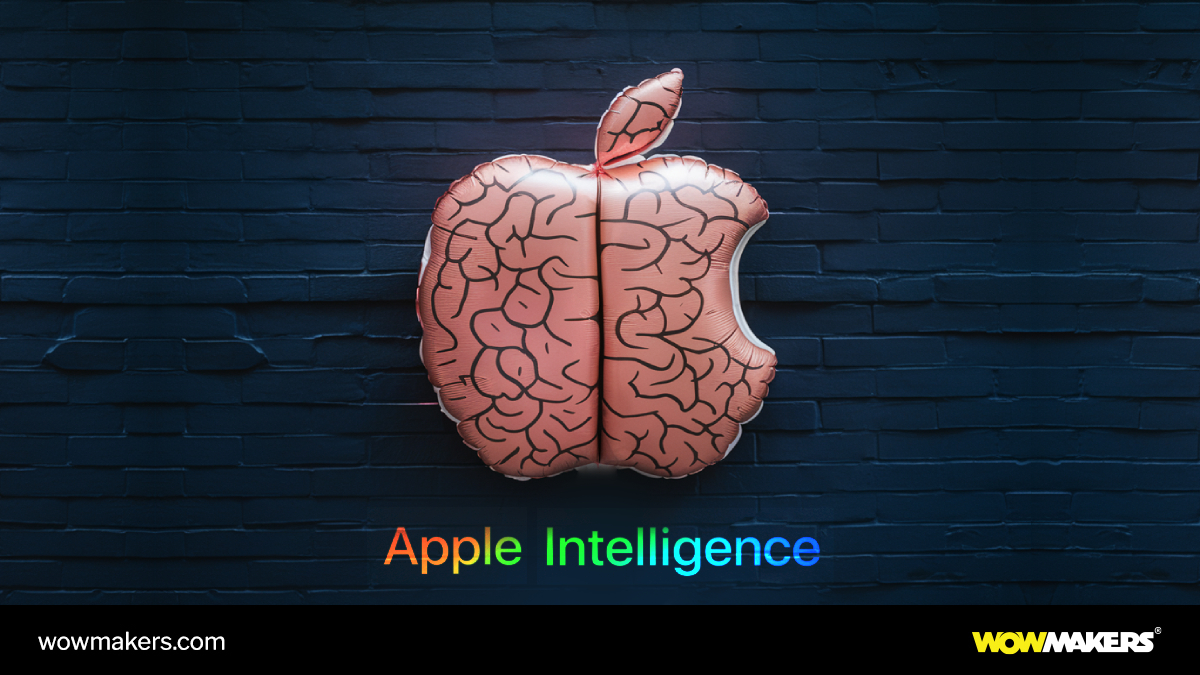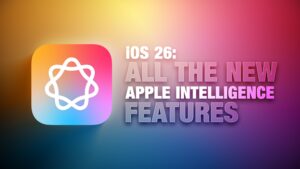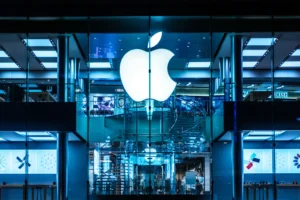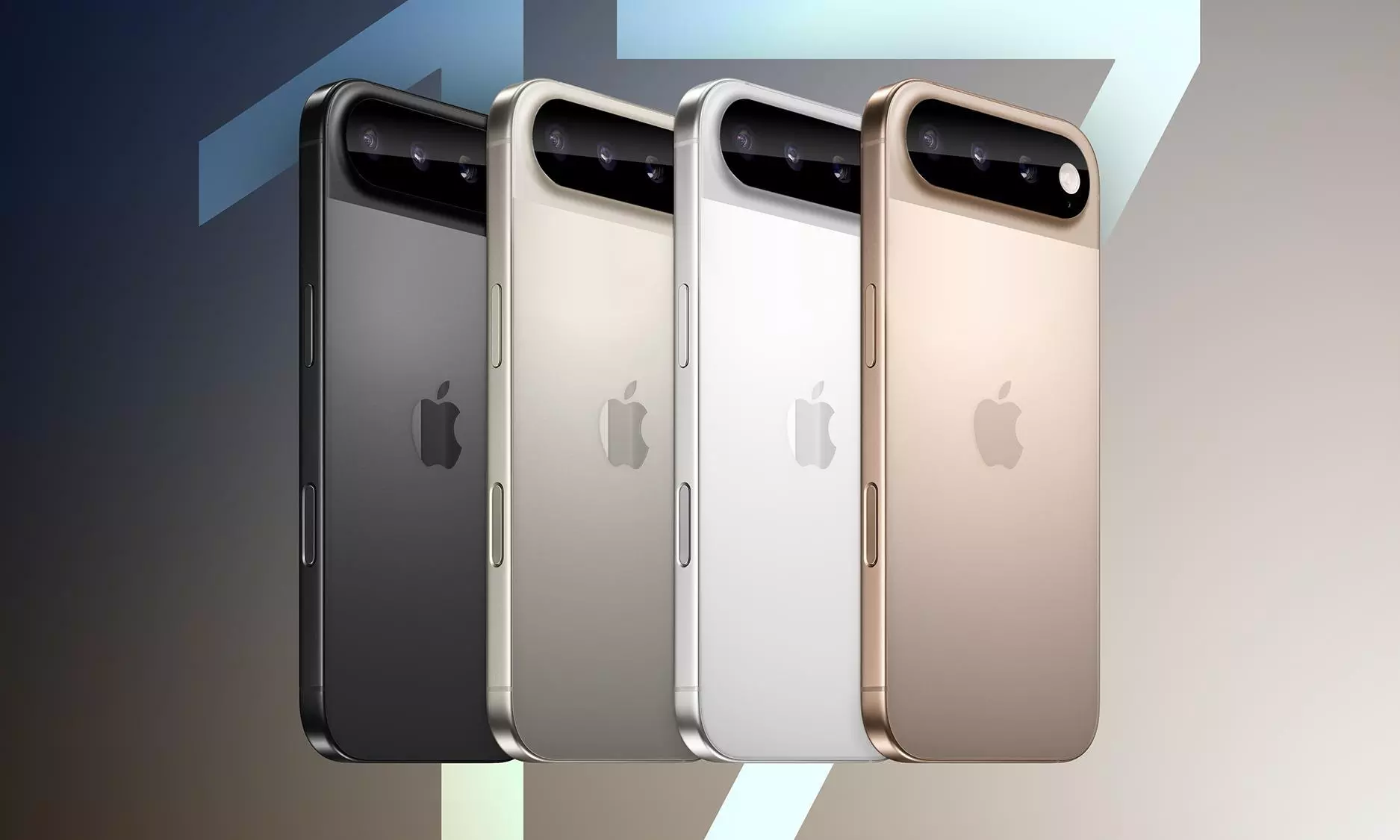Apple’s AI Updates: How “Apple Intelligence” Is Reshaping the iPhone, iPad, Mac—and Beyond
Apple’s AI story has shifted from quiet, on-device smarts to a full-fledged, platform-wide strategy called Apple Intelligence. Announced at WWDC 2024 and rapidly expanded through 2025, Apple Intelligence weaves generative AI into the daily flow of iOS, iPadOS, macOS—and even visionOS—while pushing an uncompromising stance on privacy and security. It’s not just a chatbot. It’s a fabric of features—writing tools, image generation, context-aware assistance, and a reimagined Siri—built to work inside the apps you already use.
This deep dive walks you through what Apple launched, what’s new in 2025, how it works under the hood, device/language availability, and what it means for developers and users.
The Big Idea: AI that Feels Native, Personal, and Private
Apple Intelligence is less about a single “assistant app” and more about ambient intelligence—AI that shows up exactly where you need it: Mail, Messages, Notes, Photos, system-wide writing fields, and Shortcuts. The philosophy is straightforward:
-
Integrate, don’t bolt on. Instead of sending you to a separate AI app, Apple baked generative features into the OS and first-party apps.
-
Use your context ethically. Your calendar, contacts, location, recent files, messages, and on-screen content can inform better answers—without leaving your control.
-
Default to on-device. When tasks are small enough, models run locally. When a larger model is needed, Apple routes the request to Private Cloud Compute (PCC)—Apple-silicon servers with verifiable software images and cryptographic safeguards. Apple Security Research
-
Interoperate when it helps. For some creative or research tasks, you can optionally tap ChatGPT right from Apple’s UI, with disclosure and consent flows. Apple+1
This is Apple’s attempt to make AI feel like part of the operating system itself—reliable, fluid, and privacy-first.
Headline Features You Can Actually Use
1) Writing Tools everywhere you type
In text fields across the system, Writing Tools can rewrite, proofread, summarize, change tone, or structure content into lists and tables. This is handy for email drafts, research notes, or condensing lengthy threads. Automation fans can even trigger these with Shortcuts (more on that below). AppleTom’s Guide
2) Image Playground, Genmoji, and Image Wand
Apple added a playful layer to creation:
-
Image Playground: Generate images with simple prompts, available as a standalone experience and inside apps.
-
Genmoji: Create custom, emoji-like stickers from descriptions or based on people in your photos.
-
Image Wand (in Notes with Apple Pencil): Convert rough sketches into polished images.
These tools have steadily gained options and tighter integration since launch, including optional workflows that can invoke ChatGPT’s image models when you choose to use them. AppleWikipedia
3) A more capable, context-aware Siri
Siri received its biggest overhaul in years: a refreshed look, typed interactions, and far better understanding of context—what’s on your screen, what you did recently, and which app has the info you need. In 2025, Apple previewed deeper in-app control via upgraded App Intents, enabling Siri to do increasingly complex tasks hands-free (like managing content inside apps). Apple+1The Economic Times
4) Visual/Screen intelligence
Apple Intelligence can reason about what’s on your screen and suggest actions—copying a code one-time password, grabbing a tracking number, or pulling data from a PDF to create a reminder. These “it just noticed” moments are where Apple’s tight OS integration shines. Apple
5) Shortcuts supercharged by “Use Model”
Shortcuts can now call Apple’s on-device model (or, with your permission, PCC or ChatGPT) as a building block inside automations. That means you can process text, summarize webpages, transform formats, or generate images as part of a multi-step workflow—then file the output to Notes, Files, or mail it off. Power users can chain AI with system actions for truly bespoke automations. Tom’s Guide
What’s New in 2025: Broader Capabilities, Wider Access
Apple spent 2025 turning Apple Intelligence into a broader developer and global story.
-
Developer access to the on-device foundation model. Apple opened APIs so third-party apps can tap the same private, on-device intelligence (with graceful fallbacks and privacy fences). Expect to see apps adding “AI-smart” features that still work offline for many tasks. Apple
-
Language and regional expansion. After an initial English-first rollout, Apple added French, German, Italian, Spanish, Portuguese (Brazil), Japanese, Korean, and Simplified Chinese, plus localized English for Singapore and India, making these features far more globally useful. Apple+1
-
Deeper Siri control in apps. Behind the scenes, Apple has been pushing a richer intent model so Siri can perform precise in-app actions with voice alone—one of the more visible leaps users will notice as apps update. Apple
Under the Hood: Models, On-Device Compute, and Private Cloud Compute
Foundation models—on your hardware
Apple ships on-device foundation models tuned for everyday tasks: writing, summarizing, image generation, and contextual understanding. Running locally delivers speed and privacy; it also explains why feature parity hinges on modern chips and memory bandwidth. When a query outgrows these models, it can escalate to PCC. Apple Machine Learning Research
Private Cloud Compute (PCC) for heavy lifts
For complex requests, Apple routes to PCC, its own Apple-silicon servers running signed, inspectable software images. A key promise: your device won’t talk to a server unless the server’s code has been publicly logged for inspection. Security researchers get a Virtual Research Environment (VRE) to examine PCC behavior. Think of PCC as “Apple-run cloud with verifiable privacy,” not a generic data center. Apple Security Research+1
Optional ChatGPT handoff
Some creative or knowledge tasks may offer an “Ask ChatGPT” option. You’re told when it’s used, and you can choose not to send anything off-device. This “best-tool-for-the-moment” approach keeps Apple in control of privacy defaults while giving users a path to more expansive models when they want them. Apple+1
Availability: Devices, OS Versions, and Languages
Supported devices (as of mid-2025) reflect Apple’s emphasis on modern NPUs, GPU bandwidth, and memory:
-
iPhone: iPhone 16 family and iPhone 15 Pro / 15 Pro Max support Apple Intelligence.
-
iPad: iPads with A17 Pro or M1 and later.
-
Mac: Macs with M1 and later.
-
Vision Pro: Supported with the appropriate visionOS version.
You’ll also need current OS versions (iOS/iPadOS 18.1+, macOS Sequoia 15.1+, and visionOS 2.4+) and a supported AI language setting; Apple lists a 7 GB storage requirement to enable Apple Intelligence. AppleApple Support
Languages and regions: Apple rolled out beyond initial English to major world languages in 2025 and introduced localized English variants including English (India) and English (Singapore)—a big milestone for natural-sounding interactions in those markets. Apple
Note: Not every feature lands everywhere at once; Apple continues to phase in capabilities by language, region, and app. For the most accurate matrix, check Apple’s feature-availability page and the latest support notes. Apple
Everyday Use Cases That Land
Smarter communication
Draft an email in Mail, then hit Rewrite to make it friendlier. Long message thread? Tap Summarize. Running late? Ask Siri to “text my 6 pm meeting that I’m 10 minutes out and include the calendar link”—Siri uses context to fill in details.
Research, planning, and life admin
Clip an article to Notes and use Summarize or Table-ify to turn ingredients, specs, or timelines into structured lists. With Shortcuts, you can assemble “research packs” that fetch webpages, extract key points, and file them into a project folder automatically. Tom’s Guide
Visual creativity for non-artists
Use Image Playground for quick social graphics, explainer visuals, or mood boards. With Genmoji, spin up custom stickers that match your brand or event. In Notes on iPad, sketch a flowchart and let Image Wand clean it up for a presentation. AppleWikipedia
System savvy, without micromanaging
Apple Intelligence notices useful bits—tracking numbers, dates, codes—and proposes actions. It can reason over the current app screen to help you finish a task faster, especially when paired with Siri for voice-only flows. Apple
What This Means for Developers
The 2025 updates opened the door for third-party developers:
-
On-device model access via Apple’s APIs means you can add features like rewrite/summarize, entity extraction, or intent understanding without shipping data off device—crucial for enterprise, health, or finance apps. Apple
-
Shortcuts and “Use Model.” Developers can expose actions that users compose into automations with AI in the loop: parse a receipt → categorize expense → attach to a report in Notes → mail the PDF to accounting, all with one Siri phrase. Tom’s Guide
-
Privacy and trust by default. Apple’s model means you can market AI features that are privacy-preserving out of the box, leaning on PCC when needed but still within Apple’s verifiable environment. Apple Security Research
For teams building AI-enhanced apps, this lowers friction: fewer custom model deployments, easier consent UX (because Apple standardizes it), and hardware-accelerated performance on the user’s device.
Competitive Angle: Apple’s “OS-Native” Bet
While other players spotlight standalone chatbots, Apple’s strategy is to infuse the OS with AI while using its control over hardware, silicon, and software to hit a sweet spot of speed + privacy. Analysts have noted that limiting the richest features to newer chips nudges upgrades—especially on iPhone—by tying marquee AI to modern hardware. Practically, Apple needs that horsepower to keep experiences responsive and local. wired.com
Limitations and Trade-offs (Today)
-
Hardware gating: If you’re on older iPhones (non-Pro iPhone 15 or iPhone 14 and below), you won’t get the full Apple Intelligence suite. You’ll still get OS upgrades, but not the most demanding AI features. Apple
-
Staged rollout: Language and regional availability are expanding but not universal; certain features debut in select locales first. Apple
-
Model boundaries: On-device models are intentionally compact. For very open-ended tasks, you’ll either see a pared-down result or an optional handoff to PCC or ChatGPT—with clear prompts and consent. Apple Security ResearchApple
Getting Started: A Quick Checklist
-
Check device support & update OS
Make sure you’re on a supported iPhone, iPad, or Mac and running iOS/iPadOS 18.1+, macOS Sequoia 15.1+, or visionOS 2.4+. Enable Apple Intelligence in Settings/System Settings. Ensure device language and Siri language match a supported option, and free up the recommended 7 GB storage. Apple Support -
Try Writing Tools first
Open Mail, Notes, or any app with a standard text field and try Rewrite, Proofread, or Summarize. It’s the fastest way to feel the difference. -
Experiment with Image Playground and Genmoji
Generate a header image for your blog or custom stickers for your team. If offered, try the optional ChatGPT variants and compare styles. -
Give Siri real work
Ask Siri to act across apps using context: “Show me the PDF Priya sent yesterday, extract dates into a reminder for Friday at 5 pm, and email it to my team.” Over time, you’ll learn which routines are worth a Shortcut. -
Build a Shortcut with “Use Model”
Create a one-tap routine that grabs a webpage, summarizes the content, converts any ingredient list to a table, and saves it to Notes—then schedule it. Tom’s Guide
The Road Ahead
Apple’s 2025 moves—developer APIs for on-device models, language expansion, and more capable Siri—suggest a simple trajectory: more AI, more places, less ceremony. Expect:
-
Richer app automations as developers wire Apple’s models into creative, productivity, finance, and health tools.
-
Deeper screen understanding so the OS quietly unblocks common tasks.
-
Broader language nuance—especially for India and multilingual regions—where localized English and additional languages reduce friction. Apple
As AI matures, Apple’s differentiator is clear: a privacy-first approach coupled with tight OS integration. If they maintain speed, reliability, and consent-driven handoffs to larger models when needed, Apple Intelligence won’t feel like a bolt-on—it’ll feel like part of the device.
Key Sources and Further Reading
-
Apple’s WWDC introduction of Apple Intelligence and privacy architecture (PCC). AppleApple Security Research
-
Developer and capability updates announced in 2025. Apple
-
Feature expansions: Image Playground, Genmoji, Writing Tools, and visual intelligence. Apple
-
Shortcuts “Use Model” and practical workflows in iOS/iPadOS/macOS 26 betas. Tom’s Guide
-
Availability: devices, OS versions, languages (including English-India). Apple+1Apple Support
https://bitsofall.com/apple-vision-pro-2-next-gen-spatial-computing/
Apple iPhone 17 Series (iPhone 17, 17 Air, 17 Pro, 17 Pro Max)





